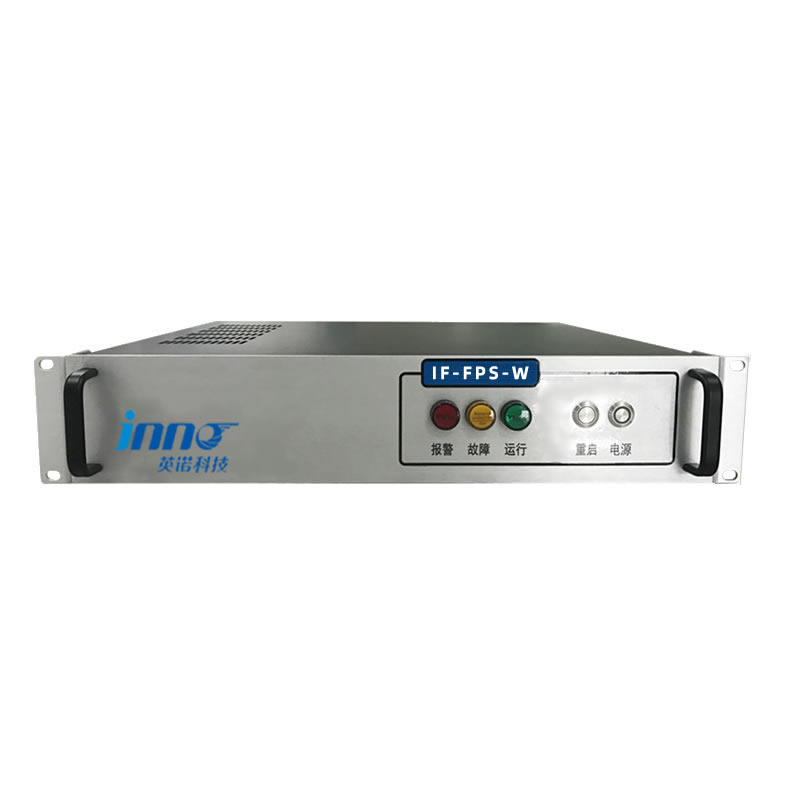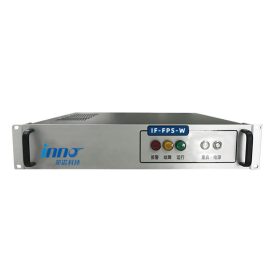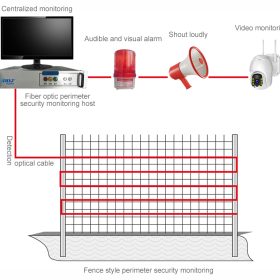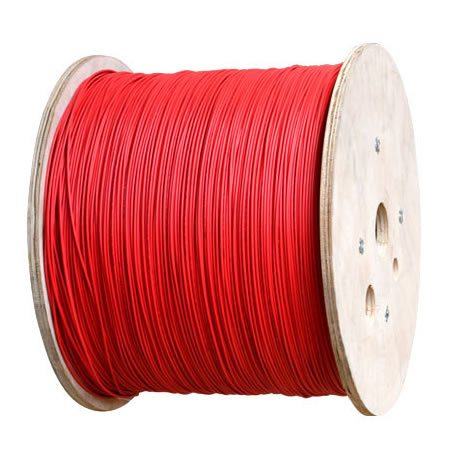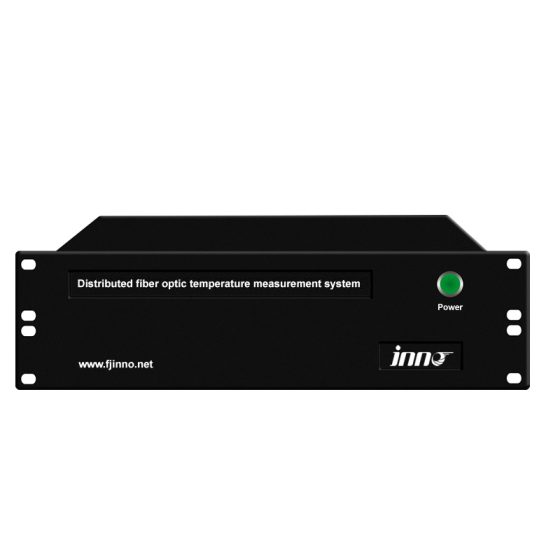The fiber optic perimeter security system combines Rayleigh interferometry positioning technology and optical frequency domain scanning technology. By sensing and analyzing the environmental stress of the light pairs in the fiber optic (cable) deployed in the defense area that touch or pass through the load-bearing objects (such as walls, soil, fences, 等。), the disturbance signal is transmitted to the system host. Through signal extraction, waveform analysis, and intelligent behavior discrimination, different types of interference are determined, such as intrusion into prohibited areas, crossing walls, and cable damage. The system realizes early warning and alarm, and can be linked with video, audio-visual and other equipment to truly achieve comprehensive and all-time intrusion monitoring.
分散型光ファイバー Perimeter Security (Wall/Fence Overpass Prevention) Monitoring System
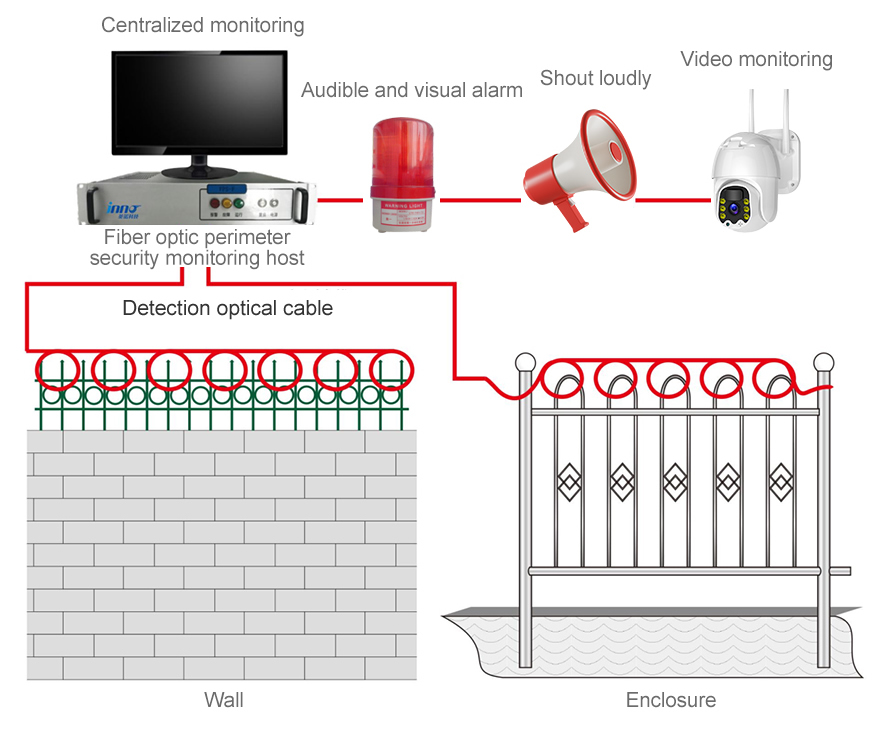 It mainly consists of a fiber optic perimeter security monitoring host and a detection optical cable. The fiber optic perimeter security monitoring host mainly achieves the monitoring effect of fence anti rollover by laying one core of the fiber optic cable on the top of the fence.
It mainly consists of a fiber optic perimeter security monitoring host and a detection optical cable. The fiber optic perimeter security monitoring host mainly achieves the monitoring effect of fence anti rollover by laying one core of the fiber optic cable on the top of the fence.

Distributed fiber optic perimeter security (fence type anti crossing and destruction) 監視システム
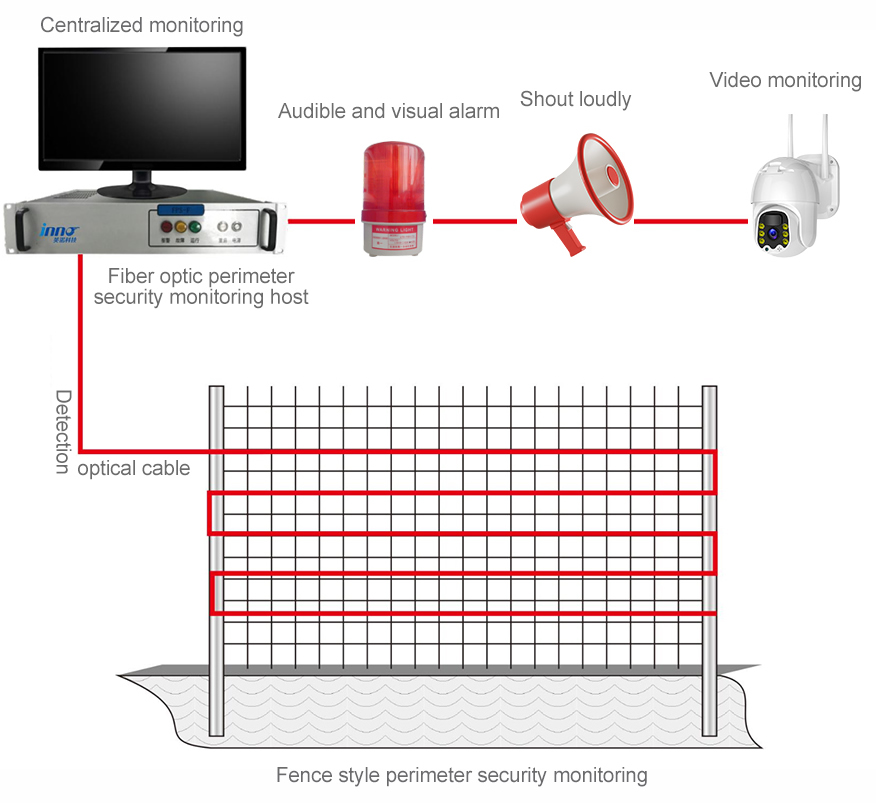
The fiber optic fence perimeter monitoring system (fence type anti crossing and damage) mainly consists of a fiber optic perimeter security monitoring host and a detection optical cable. The fiber optic perimeter security monitoring host mainly achieves the monitoring effect of crossing and damaging the fence body through one core of the optical cable laid on the fence body.

Characteristics of Distributed Fiber Optic Perimeter Security Monitoring System
High performance
Measure the farthest distance: the detection distance can reach 30km and accurately locate the intrusion point.
Continuous distributed measurement: It can achieve simultaneous monitoring of multiple points and events without affecting each other.
Rapid response: The 10KM single channel scanning cycle is as low as 0.2 お代わり.
Excellent stability: can be used in dangerous and harsh environments such as wind, rain, and lightning, with strong resistance to alarms. The system has undergone multiple rounds of high and low temperature alternating humid and hot environmental testing to confirm its adaptability to various harsh environments.
低コスト
Highly intelligent, easy to realize unattended: the system can send the report to the person in charge through SMS and the Internet when detecting abnormalities. Open design facilitates data management and on-site control.
High reliability and low cost: Unlike technologies such as video surveillance and electronic fences, detection optical cables deployed on the ground, underground, or in fences have less obvious targets and are less susceptible to malicious damage; And double-layer protective optical cables can be set up to distinguish the direction of intrusion. 同時に, if one layer of optical cables is maliciously damaged, the other layer can continue to conduct security detection, and double-layer protection does not significantly increase security costs.
security
Intrinsic safety and reliability: The optical fiber used in the system does not generate any electrical sparks, and the average power of laser pulses transmitted in the optical fiber is very low.
Even if the fiber optic cable breaks, there will be no danger.
Excellent electromagnetic insulation, 電磁干渉の影響を受けない, essential lightning protection: The temperature sensing fiber used in the system is made of quartz, completely insulated and not affected by lightning strikes: the frequency band of laser pulses transmitted in the fiber is much higher than that of the electromagnetic field, completely unaffected by electromagnetic interference, so even working in a strong electric field environment is completely unaffected.
Easy to maintain
Simple construction and easy maintenance: The armored optical fiber used in the system has excellent compressive and tensile strength, and is easy to construct. It is difficult to encounter problems during use. Even if there is damage, it can be restored to work after being re fused by professional personnel. High tolerance for additional losses: The system can tolerate an additional loss of 3dB, and can operate normally even if there is an additional loss of 50% after removing attenuation losses.
 INNO光ファイバー温度センサー ,温度監視システム.
INNO光ファイバー温度センサー ,温度監視システム.
